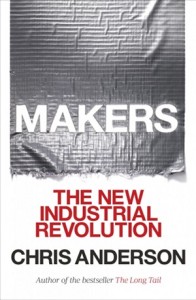I’ve followed Tim Ferriss since the first release of The Four Hour Work Week. He’s taken his share of criticism, and his huge success has given him a bit of an excessive reputation, but he is world class at showing how to break down a problem and create a process to solve it. His material goes into depth, so reading his new blog posts or podcast episodes is often too much at that moment. But when you encounter that problem, his resources are some of the best to go to when getting started.
Tim is big into travel and foreign languages, and he has had three long posts about learning a new language, two of which were guest posts by language learning experts. I skimmed all three and decided to dive into the process by Gabriel Wyner of Fluent Forever, in the article “How to Learn Any Language In Record Time and Never Forget It”. It ended up being 20+ pages printed, along with a feast of links to Gabe’s other writing and materials.
Here’s a one page summary of his main points:
To really learn a word in a foreign language, you need to build connections to all parts of that word – spelling, sound, meaning, and personal connection.
First, learn the sounds (1-3 weeks):
- Study the specific sounds that are new or different in the target language – he has compiled these “Pronunciation Trainer” lists and sells them for a reasonable price, and he tells you how you can make your own
- Practice hearing, pronouncing, and spelling the sounds
Second, learn a set of common words using pictures (1-2 months)
- Common words are used more often, so learning them has disproportionate benefit
- Google search for images using the foreign word, not your native translation, so you can learn the subtle differences in meaning
- Making your own cards with images you found is part of the learning process
Third, learn grammar and abstract words (2-3 months)
- Grammar is easy when you have a strong vocabulary
- Learn grammatical forms using example sentences
- You can get translated sentences from Google Images, by finding the original captions
- You can have your own sentences translated at sites like Lang-8
After that, you pursue fluency in the way that works for you:
- YouTube has lots of video of long-running TV programs in many languages. The familiarity of character and voices make them easier than news or movies
- Books you know or about topics you’re familiar with are more likely to engage you and get you to actually study – in one of Tim’s other language blog posts, he wrote about how much Japanese he learned from a judo textbook
- For speaking, you can find tutors on Craigslist, foreign language Meetup groups, or find people to talk with on sites like iTalki.com.
Gabe’s article was a wealth of information, and if my summary is useful, you should read his whole long post. For ~$50 you can get his pronunciation trainers and word lists, and the Anki mobile app. He’s also making his own app that looks to incorporate his training methods and materials, but it’s still in beta/pre-order as of September 2018.
I’m going to add the Fluency Forever methods to my daily use of the Hello Chinese app. I will report on my progress.
Resources:
- How to Learn Any Language in Record Time and Never Forget It – guest post on Tim Ferriss’ blog
- Fluent Forever – https://fluent-forever.com/
- Book – https://smile.amazon.com/dp/0385348118/?tag=toweofbabe-20
- App – https://fluent-forever.com/app/ – looks like it encapsulates the flash cards, spaced repetition, and word lists
- Pronunciation Trainer Anki flashcard decks – https://fluent-forever.com/product/fluent-forever-pronunciation-trainer/
- Word lists – https://fluent-forever.com/product/most-awesome-word-lists-ever-seen/
- Anki Spaced Repetition program
- Web based version, links to desktop downloads – http://ankiweb.net/
- AnkiMobile iOS app ($25) – https://itunes.apple.com/us/app/ankimobile-flashcards/id373493387?mt=8 – he recommends it because the free app from Ankiweb doesn’t cache audio files
- Fluency Practice Resources

